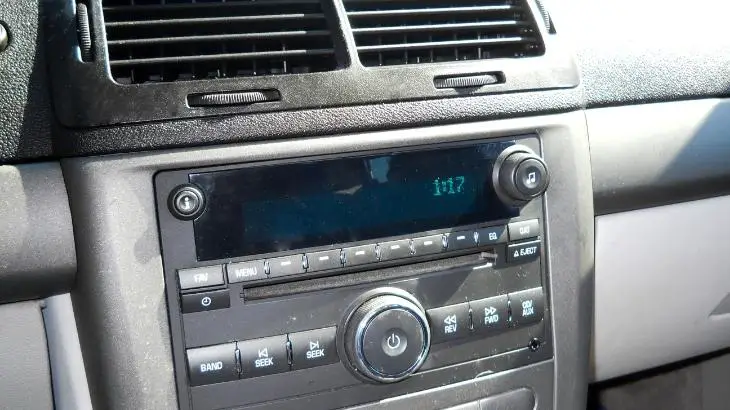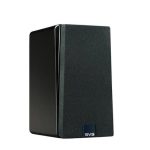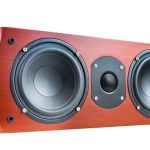Over time, car speakers and any other loudspeaker, in general, tend to wear out or even break down altogether. The wearing out may especially be aggravated by the inferior quality that most stock speakers come equipped with. In addition, the internal components may become loose, but unfortunately, the situation may be beyond your control.
There are many reasons why your speakers, especially the rear car speakers may stop working. The most obvious reason why your car speakers may start dying one after the other is because of continued abuse. This includes playing music at volumes high enough to blow your entire car audio system.
In other cases, the issue may be as a result of wiring hitches between the head unit/amplifier and your rear car speakers, making the speakers cut out. In order to get to the root cause of the problem, you may want to carry out some basic troubleshooting to determine why the speakers are not working. In this article, we’ll provide you with quick fixes to help you get your rear car speakers up and running again.
Troubleshooting Tips Rear Car Speakers Not Working
Check the head unit

Check your head unit and ensure that it is working properly. If there is nothing wrong with the head unit, then you can conclude that your rear speakers are faulty. Besides, if your front speakers are working just fine, then this should be a confirmation that the rear speakers are the problem.
However, before you move to the next troubleshooting procedure, you may want to check for any unplugged or loose wiring on the head unit. After you’ve ruled out the head unit is in order but can’t still get sound from the rear speakers, you can move on and try to locate other issues.
Check your external amplifier
Considering that audio signals have to pass through the car amplifier before going to the speakers, the amplifier may also be a culprit in this kind of problem. First off, you’ll need to ensure that your aftermarket amplifier is turning on properly.
Next, check the input wires for the rear speakers to ensure that they are not loose or disconnected. Also, ensure that the amplifier is not in the protect mode as a result of overheating. You may also want to check inline and onboard fuses to ensure that they are both functioning as required.
If the above tricks don’t work, you may need to check the gain to ensure the gain for rear channels is not turned down. That said, ensure that the rear speakers’ gain is set at the required level to enable them to produce some sound.
Check rear car speakers wiring
If you’ve checked both the head unit and amplifier and ascertained that they are in tip-top shape, you may want to check the car stereo wiring. Check for wire continuity between the rear speakers and head unit/ amplifier to ensure that they are not broken along the way.
It is also important to note that when installing your speakers, it is always a good idea to ensure that the wires are routed in a way that makes it easy to inspect them visually. If you’ve installed your rear speakers at door panels, they are more likely to get damaged at the point where they pass the door flame. Besides, the repeated action of opening and closing the doors may impose stress on the wires causing them to wear out over time.
On the same note of speaker wiring, you may also want to check for shorted wires. If the any of rear car speaker wire input is shorted, then it will definitely make your speakers cut out. Furthermore, short circuits can potentially damage your car speakers or even your entire car electrical system.
Test the speakers
Once you’ve determined that there aren’t any issues with the head unit/amplifier and wiring, the next thing you can do is to test both rear speakers. You can start by getting new speaker wires and run them to each speaker and observe how they react.
If you can hear sound coming from the speakers with the new wires, you can conclude that the old wiring was outdated. In such a case, routing new wires to the rear speakers will help solve the problem. However, if you don’t hear even a slight pop from the speakers even with the new wires, you can be sure that the speakers are broken or have failed totally.
Another way you can test the speakers is by removing the wiring harness and plugging the speakers’ terminal directly into the battery. If you can hear sound coming from one or both speakers, then chances are that they are still in a good working condition.
Replacing the speakers
If you’ve done all the above troubleshooting tips and nothing seems to be working, probably the damage to your speakers is irreversible. In such a case, the only viable solution is to replace rear car speakers altogether. It may also serve as a good opportunity to upgrade your entire car stereo with high-performance aftermarket speakers.
Parting Shot!
If your car stereo is installed correctly, then you should experience sound coming from both the front and rear speakers. If for whatever reason the rear speakers stop working abruptly, it implies you won’t enjoy full-range sound in your vehicle. The best way around this is to troubleshoot the entire car audio system to establish how you can resolve the problem.
The condition of your rear speakers will determine if you need to repair them or get a new replacement. Before you can settle on either option, you may want to ensure that everything is properly connected and that the speakers are not actually blown. In addition, ensure to carefully examine all the components in question, considering that even a minor mistake can lead to numerous problems.
Michael Evanchuk is a San Francisco-based sound engineer with 20 years’ experience installing, troubleshooting, and repairing commercial, automotive, and household sound equipment. Evanchuk owns an auto stereo center, where he offers highly competitive car audio installation and repair services. He has written dozens of articles on different sound engineering topics, all of which have been published in leading journals, blogs, and websites.





